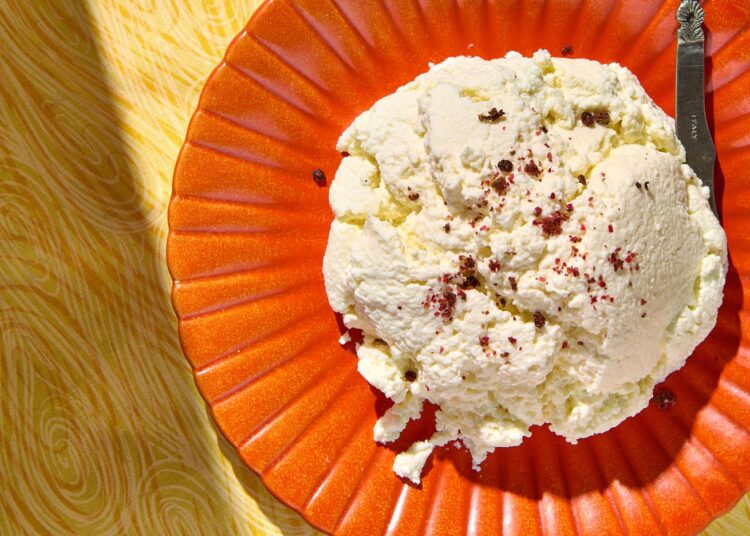The only tool you’ll need is a thermometer
Store-bought ricotta can’t hold a candle to creamy, rich homemade cheese. On top of being delicious, homemade cheese is as easy as heating up some milk and doesn’t require any special equipment besides a thermometer. Draining the curds in cheese cloth is optional — a thin T-shirt or dish towel works just as well. You can use fresh lemon juice to make the milk coagulate, but I find it easier to add citric acid, which you can find at spice shops or online.
After you’ve separated the curds you’ll wind up with whey; the leftover liquid is full of beneficial probiotic organisms, amino acids, vitamins, and minerals, so don’t pour it down the drain! You can use it in soups, sauces, and smoothies as a neutral-flavored liquid that adds a big nutritional boost to your meal.
Homemade Ricotta Recipe
Makes 2 cups (1 pound)
Ingredients:
8 cups whole milk
½ cup heavy cream
½ teaspoon salt
⅓ cup lemon juice or ¾ teaspoon citric acid
Instructions:
Step 1: Pour the milk and cream into a heavy-bottomed pot and heat gently over medium heat until a thermometer registers 185 degrees, about 15 minutes.
Step 2: Remove the pot from the stove and add the salt, and then slowly stir in the lemon juice (or add the citric acid). Stir gently without touching the bottom of the pot (over-zealous stirring will make the ricotta grainy). Continue to stir until the milk separates into bright white chunks of curd and thin, yellowish liquid whey, about 30 seconds to 1 minute. Let the mixture stand for 5 minutes.
Step 3: Dampen a large square of cheese cloth, a thin cotton t-shirt, or a cotton-sack towel and squeeze out the excess water. Line a fine-mesh sieve or colander with the fabric, letting the excess fabric hang over the sides of the sieve. Carefully ladle the curds into the colander. Gather up the edges of the fabric and twist to create a little purse.
Step 4: Let the curds drain for 20 to 30 minutes for soft ricotta that’s good for stuffing shells and smearing on toast. For dryer, dense ricotta to crumble over salads, put the sieve setup in a large bowl and refrigerate for up to 24 hours. Store in an airtight container in the refrigerator for up to 5 days. Save the whey for another use (see headnote).
Dina Ávila is a photographer living in Portland, Oregon.














